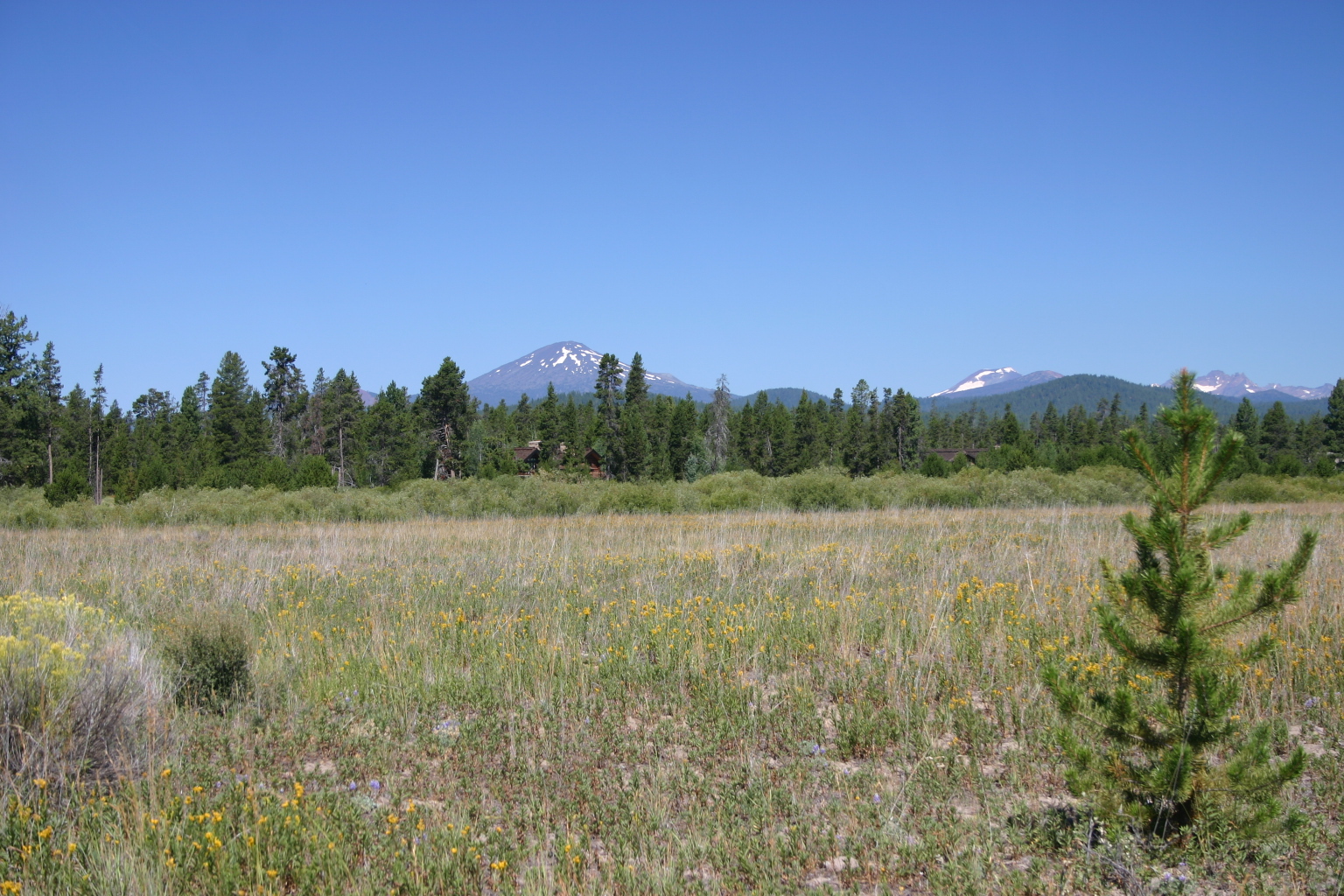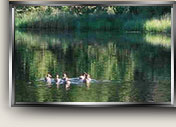Meadow
Description and
History
 The meadow occupies
approximately 30 acres to the east of the riparian zone. (The
pasture by the barn will be addressed in the Operations section of
the ranch web site.)
It appears that one reason this tract appealed to W.P. Vandevert
back in the 1890's was that the meadow area was already open and did
not have to be cleared.
The meadow occupies
approximately 30 acres to the east of the riparian zone. (The
pasture by the barn will be addressed in the Operations section of
the ranch web site.)
It appears that one reason this tract appealed to W.P. Vandevert
back in the 1890's was that the meadow area was already open and did
not have to be cleared.
Claude Vandevert states, "
I don't think my grandfather did much land clearing - maybe a
few acres. It was normal for the land to open up
occasionally into prairies and meadows without external
influence. Notice Paulina Prairie about six miles South or
Long Prairie just South of Lapine."
The meadow has almost no topsoil and
is not irrigated. Weeds predominate. In approximately
2003 the ranch pulled hundreds of lodgepole pines out of the meadow
between the fence west of the pond and the wetlands below the meadow
and next to the river. The ranch used the larger ones for the
OWEB river bank stabilization project. Many young lodgepoles
are growing rapidly between the pond and the fence. It appears
that much of the meadow would eventually become a lodgepole forest
if it were not mowed.
Possible
Improvements
The meadow could be
made more attractive, without requiring irrigation, by replanting it
with dryland grass (Idaho
fescue) and wildflowers. The planting work, using a seed drill,
should be done in the fall so winter rains enable germination of the
seeds. The project should probably be done in sections over a
period of years. Three possible replanting strategies are described
below and should be evaluated before proceeding further.
1. Kill
and Till – Start by killing all the plants in a section with
Round-up. Break up the soil (i.e. till the soil) with disks pulled
by the ranch tractor. Seed the land and allow the winter
precipitation to germinate the seeds. This is the most traditional
procedure but carries the risk that some soil will blow away or
erode before the new plants grow their roots. Native grasses take
2-3 years to become established.
2. Scrape and Re-Apply – In this approach, suggested by a landscape
company, scrape off and salvage the existing weeds, forbs, and any
native grasses. After disking the underlying soil, re-apply the
salvaged material to provide an organic layer of seed bank, duff,
and microbes for a quicker and more diverse native plant
establishment. The roots of the weeds and other vegetation will
help prevent erosion. Seed the meadow with new seed. Manage the weeds with an immediate aggressive
noxious weed attack followed by reduced treatments in subsequent
years until complete eradication results.
3. No
Till – Kill all the weeds with Round-up. Plant the grass seeds
without disking up the soil. Not tilling the soil and leaving the
dead roots of the weeds in place will reduce the loss to wind and
water erosion. But some erosion of dry and sandy ranch soil is
still likely until new grass roots are established.
If the weeds are
not killed or scraped before planting, the new grass will not be
able to compete. Once the grass is established it will out-compete
most of the weeds.
Continue to Wildlife
Management
Return to
Stewardship Plan Table of Contents






